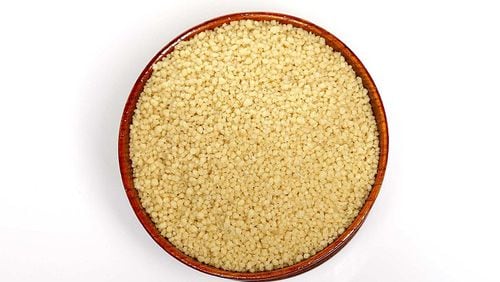A new report from the American Institute of Cancer Research finds five habits that can reduce the risk of colorectal cancer:
--Eating whole grains and foods containing fiber reduces risk
--Excess body fat is one of the strongest factors that increases risk
--Consuming processed meats and high amounts of red meat increases risk
--Drinking two or more alcoholic drinks daily increases risk
--Daily moderate physical activity reduces the risk.
But how many whole grains and fiber-rich foods are needed daily to reduce the risk?
Scientists found strong evidence that eating 3 ounces of whole grain foods daily reduces the risk for colorectal cancer by 17 percent. Scientists attribute the cancer protection to the fiber, vitamin E, selenium, lignans, and phenols found in whole grain foods.
Sounds easy enough, but what are whole grain foods? Oatmeal, brown rice instead of white; whole-wheat bread instead of white bread; ancient grains such as quinoa, teff, millet, barley, amaranth and spelt.
The definition of a whole grain is that it contains three components - the bran (where the fiber is), germ (where the nutrients are) and the endosperm (the starchy part). White flour and white rice are refined grains that have the bran and germ removed. The 2015 Dietary Guidelines for Americans recommend eating at least half of your grains as whole grains.
On average, Americans eat one serving of whole grains per day, leaving plenty of room for improvement for most of us.
To know if a food is a whole grain, read the label.
--Look for 100 percent whole wheat in bread products, listed as the first ingredient. For others grains, look for ingredients such as brown rice, quinoa, sorghum and rolled oats, which are examples of 100 percent whole grain foods.
--Check the ingredient list to see if the first grain listed is a whole grain. For example, for bread, if whole wheat is listed first, it contains a significant amount of whole grain.
Here are some ways to increase whole grains in your diet:
--Choose quick-cooking grains If time is a concern, such as instant brown rice or whole wheat couscous. Add them to salads, stews, soups and stir-fries.
--Overnight oats, with choices of add-ins, can make a great breakfast. Or add oats to muffins or meatloaf.
--Add whole grain snacks, such as popcorn or crackers like Wheat Thins or Triscuits.
Q and A
Q: I've been drinking soy milk daily for years. Since it contains phytoestrogens, I wonder if it puts me at higher risk of developing breast cancer?
A: Soy foods contain phytoestrogens (plant-based estrogens) called isoflavones. These are structurally similar to the hormone estrogens. So, they bind to estrogen receptors, although less strongly than estrogen, and exert estrogen-like effects. Because a high level of circulating estrogen is a known risk factor for breast cancer, there has been concern that consumption of soy foods may increase women's risk of developing breast cancer. However, the existing epidemiologic evidence (observational research) does not support that. On the contrary, some evidence suggest that a high intake of soy foods is associated with a reduced risk of breast cancer. The exact mechanisms for an anti-cancer effect are unclear but may include isoflavones inhibiting cell proliferation (an increase in cell number) and reducing inflammation and oxidative stress. Overall, epidemiologic studies consistently suggest no harm of soy food consumption in either women with or without breast cancer. So, continue to enjoy soy foods (preferably minimally processed ones, like unsweetened soy milk, tofu and edamame/green soybeans) as part of an overall healthy and balanced diet. - Tufts University Health & Nutrition Letter.
RECIPE
There's something about chicken that bursts with comfort food flavor. Here's a recipe from "Eating Well" magazine that is sure to be a family favorite.
Creamy Chicken and Mushrooms
4 (4-5 ounce) chicken cutlets
4 cups mixed mushrooms, (about 8 ounces), sliced
1/2 cup dry white wine
1/2 cup heavy cream
2 tablespoons finely chopped fresh parsley
Sprinkle chicken with 1/4 teaspoon kosher salt and pepper. Heat 1 tablespoon canola oil in a large skillet over medium heat. Cook the chicken, turning once, until browned and just cooked through, 7 to 10 minutes total. Transfer to a plate. Add 1 tablespoon oil and mushrooms to the pan; cook, stirring occasionally, until the liquid has evaporated, about 4 minutes. Increase heat to high, add wine and cook until it has mostly evaporated, about 4 minutes. Reduce heat to medium; stir in cream, any accumulated juice from the chicken and 1/4 teaspoon each salt and pepper. Return the chicken to the pan and turn to coat with the sauce. Serve the chicken topped with the sauce and sprinkled with parsley. Serves 4: 1 cutlet and generous 1/4 cup sauce each.
Per serving: 325 calories, 4 g carbohydrate, 29 g protein, 20 g fat, 99 mg cholesterol, 1 g fiber, 3 g sugars, 329 mg sodium.






